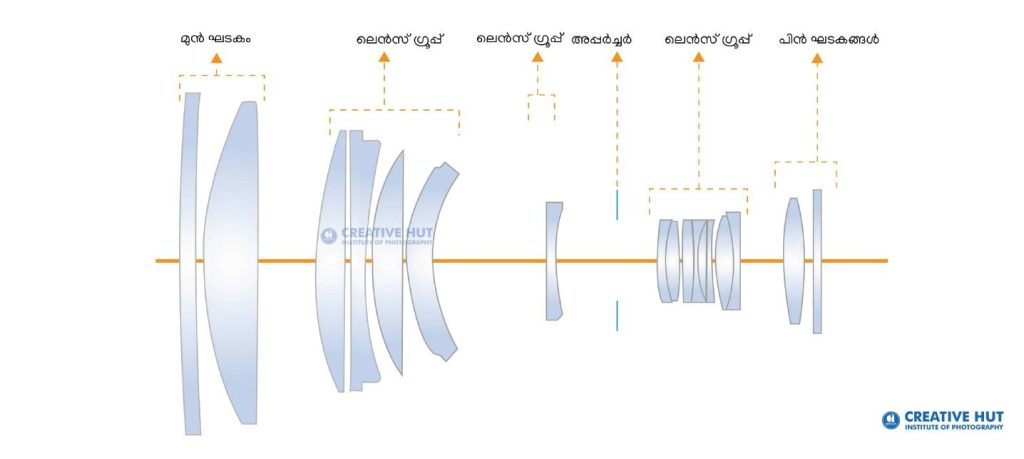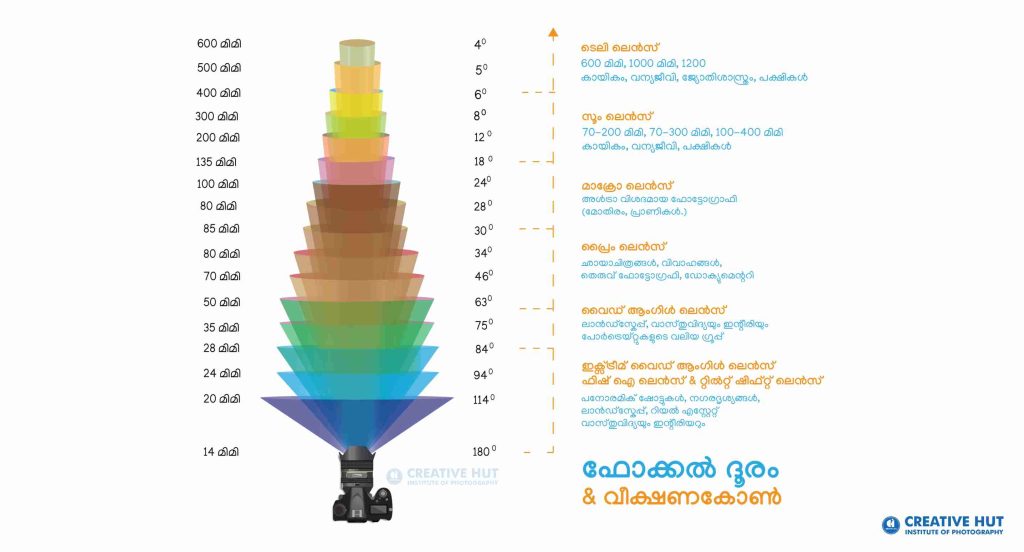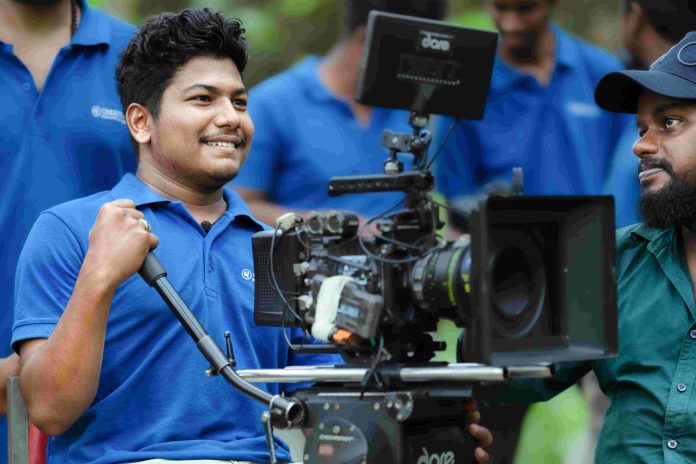When light strikes an item and is reflected, it returns in a straight line. But it returns at the same angle from which it came. That means light rays are constantly bouncing around in all various directions.
നിമ്രൂദ് ലെന്സ്
Since ancient times, the qualities of translucent crystals and glass have fascinated people with the camera obscura, a black box with a lens capable of projecting images of external things. Long before anything was known about light, the most archaic crafts that resembled the lens were invented.The Nimrud lens, created from natural rock crystal between 710 and 750 BC, is thought to have opened the path for lenses. It could have been used as an ornamental stone or as a magnifying glass for carvings in ancient times.The use of this polished crystal is unknown. The tests on lenses conducted by the Arabian scientist Abu Ali Hazanta in 945 AD are quite old.

The use of this polished crystal is unknown. The tests on lenses conducted by the Arabian scientist Abu Ali Hazanta in 945 AD are quite old.This was known to Chinese scientists and philosophers. Alhassen invented the pinhole camera and the camera obscura, both of which were never written about. Alhassant was a key figure in the theory of glass lenses.
An Italian scholar, Giambattista Della Porta, modified the camera obscura by adding a lens where light entered the box. He also utilised the camera obscura to demonstrate how the human eye functions.

To make manuscripts easier to read, European monks began placing rock crystal glass hemispheres on top of them. Between 1268 and 1300 AD, the first light and wearing spectacles appeared in Venice. However, these are not only for wearing but also for scientific research.Gerolamo Cardano, an Italian polymath, describes the use of a glass disc (biconvex lens) in his 1550 work De subtilitate. Daniele Barbaro, a Venetian nobleman, examined image sharpness and focus in 1568 by placing a lens over a hole in a camera box. His initial lens was a convex lens salvaged from an elderly gentleman’s spectacles.
There were inventions and investigations going on. After Louis Jacques Mande Daguerre formally invented photography in 1839, his colleague Charles L. Chevalier (1804-1859) created the first camera lens. It was a two-element landscape lens with chromatic aberration reduction. This lens featured only two aperture settings: f/14 and f/15. The exposure period was excruciatingly long.
Chevalier invented the world’s first variable focus lens for portrait photography in 1840. A variable focus portrait lens with an aperture of f/6 invented in 1840 was essentially devoid of spherical distortion. He told his friend Joseph Max Petzval about his discovery. However, in 1840, Joseph Max Petzval invented a better portrait lens. Friedrich Voigtlander created this lens.
Between 1830 and 1930, new components were discovered in lenses, and lenses got increasingly complicated. As cameras became more widely available in the 1930s, they were employed for more than just portraiture and research.Cameras and lenses expanded at a breakneck pace after WWII. The importance of Japanese producers should be recognised. Even today, Japan is the dominant force in the camera and lens business.
Photographic lenses, like everything else in the twenty-first century, have gone digital. Digital lenses can capture photographs at breakneck speed. They frequently have minor defects.However, the photography lens has demonstrated a remarkable ability to adapt and evolve over time. Because the original camera could not collect much light, Joseph Nicophore Nipps had to wait eight hours to snap a single shot. The image was similarly hazy. It’s mind-boggling how we can now shoot sharp photographs in milliseconds.
Anatomy of the lens

A lens not only bends but also slows light. When light flows through translucent materials, its speed varies. As a result, light bends and slows as it enters and exits a lens (depending on the lens’s design). The camera lens’s job is to direct light onto the film or sensor.

The term “lens” comes from the Latin word lent ales. The light deflects its direction when it hits and exits the body. All light rays that pass through a camera lens are redirected to a single spot via glass.When all those light rays meet again on a digital camera sensor or piece of film, they create a sharp image. If the light doesn’t meet in the right place, the image will be blurry or out of focus.
When discussing lenses, it is best to think of them in terms of their inner and outer halves. The amount of elements and groups within the lens will vary depending on the lens. Individual glass lenses within a lens are referred to as elements, and groups are made up of one or more elements.The capabilities and purposes of camera lenses vary, such as macro, wide angle, tele, and zoom. Every camera lens, however, has the same basic structure and components.
Two elements of a six-element lens, for example, are fastened together. The other four are the four distinct groups, for a total of six elements and five groups. The Canon 70-200mm lens contains approximately 20 elements. The 50mm f/1.4G lens from Nikon features just 8 elements in 5 groups. As a result, the number of elements and groups does not always define the quality of a lens.
Function of Lens
Because light travels significantly slower through a lens than through air, the lens generates its focusing effect. Refraction, also known as abrupt bending, occurs as light rays enter and depart the lens. A single lens has two opposing surfaces that are either both curved or one curved and the other flat.
Lenses can be classed based on their two surfaces as biconvex, plano-convex, concave-convex, biconcave, plano-concave, and convexo-concave. Because of the curvature of the lens surface, light rays passing through it are refracted at different angles.


Depending on the focal length of the lens and the distance between the lens and the item, the picture may be much larger or smaller than the topic.
The focal length of a lens is the distance between the lens’s Centre to the image sensor when a subject is in focus. The most prevalent unit of measurement is millimetres.
Because the angle of rays originating from a single point on a distant object do not coincide with the lens at a precise point, the image generated through a single glass is insufficient for correct work. Instead, a small patch of light is produced. An intrinsic flaw or aberration in the lens’s image results from a single item that is out of focus. Aberrations are the technical term for these flaws or deviations.A compound lens, often known as a set of glasses, is a collection of lenses made of various materials that are put together in a tube to adjust for variations in light colour and enable the camera to see.Concave and convex shapes are both possible. Some are composed of glass that is thick, highly reflective, or highly dispersive. Others are constructed of glass that has low refractive or dispersive index.
To account for the changes in each lens element and create an image with adequate clarity, lens elements can be arranged together or carefully calculated and spaced apart. A camera lens’s internal components should all have a single, straight centre point. This is referred to as the lens’ main axis.Any lens system’s strength is its capacity to create a picture crisp enough to resolve or separate two dots or lines that are extremely near to a subject. The degree to which the various aberrations in the lens system are corrected affects the lens’s ability to focus.
Two to ten elements make up the objective lenses that are utilized in cameras. There may be 18 or 20 elements spread over numerous groups in a zoom or variable-focal length lens. Without altering the focal plane, a collection of single-axis elements can achieve the needed change in focal length.
Structure of camera lens

Optical lens
An optical lens is a glass lens that, at the front of the camera lens, focuses light onto the camera body and film.

The thread filtering part
First optical lens has a threaded front for simple attachment of filters and other accessories. The attachments’ diameter, expressed in millimetres, is what attaches to each lens’s front thread. For instance, lens caps, filters, and other lens accessories.
Focusing ring
The photographer can focus the image using the focusing ring on the lens. In automated cameras, anytime the shutter release button is held halfway down, a tiny motor located inside the lens drives this ring to focus the picture. The ring must be turned until the image is in focus while using manual focus.
Focal length ring
Every zoom lens has a focal length ring. The ring allows you to zoom in or out of a topic depending on the focus length. That is, what should the image’s viewing angle be? The focus length ring determines how much of a subject should be captured in a shot.
Lens mount
The mount is the area where the lens and the camera come together. The mount of the camera varies depending on the manufacturer, and lenses are available in the market based on the mounting on the camera. On a 35mm camera, there is a distinction between full-frame and half-frame lenses. Main manufacturers’ mounts, such as Nikon, Canon, and Sony, differ, however other manufacturers, such as Tamaron and Sigma, advertise lenses for these main manufacturers.

Stabilization
When photographing in low light, the shutter speed is lowered. Image-stabilization is a method used in lenses to eliminate distortion caused by modest camera movement and subject movement when shooting a photograph.
How to rotate lenses
Although a camera differs slightly from the human eye, a standard lens comes quite close to reproducing what humans perceive in terms of perspective. A lens takes a circular image, but we interpret it as square because it is projected onto a rectangle sensor.The focal length of a camera lens is used to classify it. The angle of view varies according on the sensor sizes of the DSLR and mirrorless cameras.
Focal length & viewing angle

Wide angle lens

A large field of view can be captured with a wide angle lens. is less than the sensor’s or film’s diagonal length. Compared to a lens with a focal length of less than 35mm, a full-frame sensor is smaller. Wide-angle zoom lenses and prime lenses are both readily accessible.
Example : NIKKOR Z 17-28mm, NIKKOR Z 14-30mm, NIKKOR Z 14-24mm, NIKKOR Z 28mm, Sony FE 16-35mm, Sony FE 12-24mm, Sony FE 14mm, Sony FE 24mm, Sony FE 20mm, Canon EF 16-35mm, Canon EF 17-40mm, Sigma 14-24mm, Tamron 17-35mm Focal length ranges vary by manufacturer.
Usage : Perfect for architecture, architecture and interiors, panoramic shots, cityscapes, real estate and landscape photography.

Fisheye lenses are those having a focal length of less than 18mm, or less than 50 percent of the focal length of a wide-angle lens with a 35mm format.
An ultra-wide angle lens that can capture 180 degrees called a fisheye. The moniker “fisheye lens” comes from the fact that the lenses have an angle of view that is roughly 180 degrees and that they resemble real fish eyes. Creating oval images by distorting an image’s field of vision can be perceived as a drawback or appear to offer a different impression, even if it can capture wide images.
Example: Canon EF 8-15mm, Samyang 12mm, Sony VCLECF2 10-13mm, FISHEYE NIKKOR 8-15MM The focal length range varies by manufacturer.
Use: Perfect for landscape, cityscape, and architectural photography.
Tele lens

Telephoto lenses are used to take pictures of distant objects or scenes, which is their area of expertise. The length of the tenses will be double that of the sensor or film. The lens length is 70mm–1200mm, or more than twice as long as a full frame sensor size. There are tele zoom lenses and tele prime lenses on the market.
Example: Tele prime lens 300mm, 400mm, 500mm and 600mm focal length ranges vary by manufacturer.
Usage: Most useful for wildlife photography, planet/star photography (astronomy), and sports photography.
Zoom lens

A zoom lens is a lens that may be used to take close-up and far-off pictures. A single lens has a broad field of view. Some lenses have telephoto and wide-angle capabilities. Thus, a single lens is capable of capturing a variety of images.So two or three prime lenses can be replaced by a single zoom. It is therefore ideal for street or travel photography. Here, the fast adjustment of the focal length and light path are definite benefits. Fast zooms are pricey and have broad maximum apertures, or tiny f-numbers, which is a drawback.
Typical zoom ranges include 18-55mm, 18-300mm, and 70-200mm. Telephoto lens options include Tamron SP 150-600mm, Sigma 150-600mm, Canon EF 100-400mm, Nikon 200-500mm, Sony FE 200-600mm, Fujifilm XF 100-400mm, and Canon RF 100-500mm. By manufacturer, the focal length range varies.
Usage : Zoom lens is suitable for portrait, weddings and street photography.

Success can be achieved by working together peacefully. Photography – Abin Alex | Camera: Canon EOS 5D Mark IV, Focal Length: 340 mm, Aperture: f/5.6, Shutter Speed: 1/1000 sec, ISO: 800
Prime lens

Prime lenses are rapid and precise because to their set focal length. Unlike other lenses, the focus lens cannot be changed. These lenses contribute to crisper, more accurate images. Another advantage is that prime lenses have a large aperture and may thus capture dimly light scenes.
Example: 35mm, 50mm, 85mm etc. Focal length varies by manufacturer.
Usage : Prime lenses are ideal for wedding, candid and street photography.
Macro lens

Used to capture extremely close-up or small-scale scenes. A macro lens can produce photos of small subjects that are life-size or larger-than-life. Its primary function is to replicate the subject in a life-size 1:1 ratio. What counts is how the image on the camera’s sensor compares to the subject’s actual size.To take pictures, a certain magnification ratio is used. A 5:1 lens can capture an image that is five times the size of the subject, whereas a 1:2 lens can only record an image that is half the size of the subject on the sensor. Additionally, macro lenses have a much shorter working distance than conventional lenses because of their ability to focus far closer to the subject.
Example: 90mm, 100mm, 105mm, 180mm etc. Focal length varies by manufacturer.
Uses: Most useful for photographing insects, plants, and small objects.
Tilt-shift lens

The focus plane of a typical lens is parallel to the sensor. Alternately, the effect of limited depth-of-field at a given aperture can be controlled by tilting the lens up or down.
Due to the perspective of the lens, straight walls may actually appear to be curved; tilt shift lenses can alter that perspective, re-straightening those walls. Photographers can change the perspective of the lens using tilt-shift lenses without moving the camera. Professional architecture drawings must have them.
Explains circumstance in which the lens plane is not perpendicular to the image plane (or image sensor, in the case of DSLRs).
Usage : Ideal for architecture, cityscapes and landscape photography.
Often the topics may seem similar. But it is the photographer who finds the special and important subject among them. Photography – Abin Alex | Camera: Canon EOS 5D Mark IV, Focal Length: 340 mm, Aperture: f/5.6, Shutter Speed: 1/1000 sec, ISO: 800


